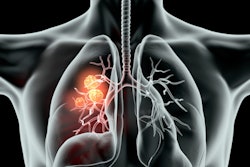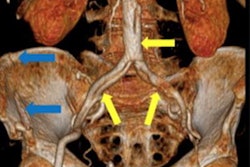Dear AuntMinnieEurope CT Insider,
Some injuries from seat-belt trauma can be misdiagnosed on initial CT scans, and particular care must be taken with vascular bowel and mesenteric injuries, according to radiologists from a top Madrid hospital.
The group from Hospital Universitario 12 de Octubre reviewed CT images of traffic accidents with clinical evidence of seat-belt injuries (anatomic abdominal injury, thoracic injury, and other injuries) from a database of 81 patients built up since 2010. In today's top article, the group has shared its findings with us and kindly given us permission to publish four cases.
In another new Spanish study, a team from Valencia has evaluated radiation dose levels for patients who were treated at three interventional radiology suites or investigated on two CT systems and a pediatric diagnostic fluoroscopy unit. Their results deserve a close look.
Dr. Paul McCoubrie is well known to many of you, having written columns for us for more than a decade now. In his latest offering, he reveals his passion for decent coffee, black pudding and mushrooms for breakfast, cycling to work, and being a good colleague.
Cinematic rendering uses information derived from CT and conebeam CT images, and it serves as an alternative approach for visualizing volumetric medical imaging data. German researchers have used cinematic rendering for the volumetric image visualization of midface CT datasets. Get the full story in this fascinating report.
Downhill biking is particularly popular in mountainous areas where ski lifts can be used to access trails, but horrendous injuries can be incurred. Santa Chiara's Hospital has become a treatment hub for trauma patients in the northern Italian province of Trentino, and a team from there has written about the use of CT in these cases.
This newsletter has described just a few of the many reports posted in the CT Community over the past couple of weeks. Please scroll through the full list below, and feel free to contact me if you have ideas for future coverage.



















